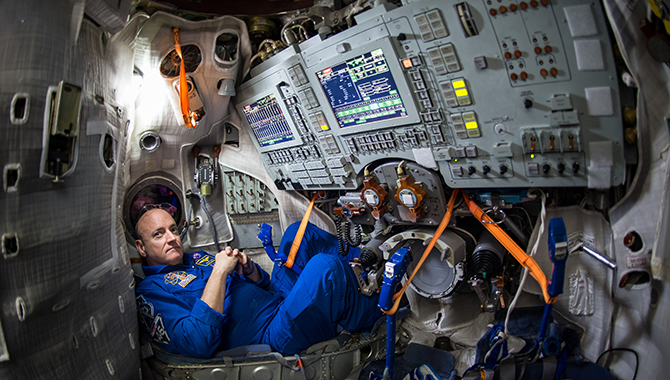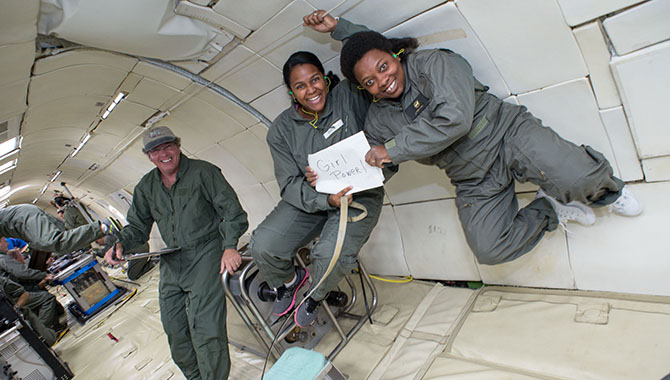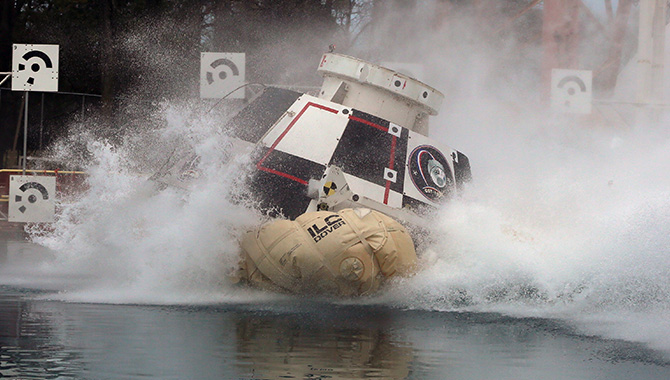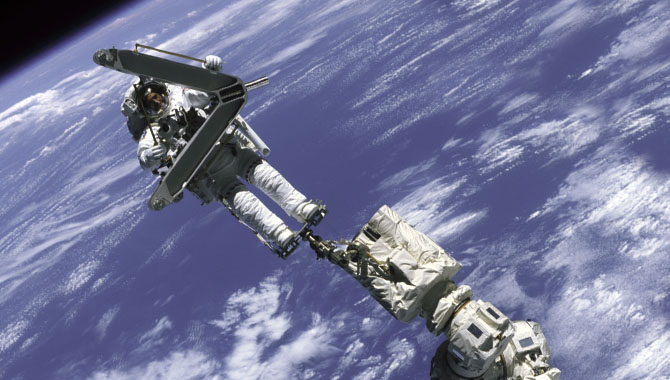
In one of the many experiments performed on the ISS, NASA astronaut Steve Swanson harvests a crop of red lettuce plants aboard the ISS. Findings from this experiment could one day help crews on deep-space missions produce their own food during flight.
Photo Credit: NASA/Alex Gerst
The International Space Station (ISS) is a unique platform for discovery. A recent report from the Government Accountability Office (GAO) focuses on maximizing its value and utility.
Based in low Earth orbit (LEO), the ISS is a state-of-the-art facility for scientific exploration across a range of disciplines, including earth and space science, human physiology, and space-related technologies.
Since its inception 14 years ago, the ISS has been a key resource for investigation into issues impacting human spaceflight. Today, work performed on the ISS is actively advancing NASA’s journey toward Mars. The ongoing One-Year Mission, which marks the first time that astronauts will spend a year on the ISS, aims to rigorously investigate the impact of long-duration spaceflight on human physiology. The assessment will be based on findings from more than 400 experiments conducted on the ISS, ranging from examining the effects of prolonged weightlessness on bone, muscle, and the cardiovascular system to exploring the psychological effects of long-term exposure to microgravity environments. Ultimately, this research is expected to contribute significantly to NASA’s efforts to send crewed missions beyond LEO.
But that isn’t the only work being done on the ISS. In 2005, Congress designated the U.S. section of the ISS a National Laboratory. As such, 50% of the ISS laboratory is available to non-NASA organizations, including other federal agencies, private industry, and academia. This expanded vision for the laboratory increases access and opportunity for critical research in areas such as materials science, biomedicine, and Earth observations that will be returned to our planet to benefit humankind.
In 2011, the Center for the Advancement of Science in Space (CASIS) was selected to manage the commercial and academic activities in the ISS lab. Based on parameters established in the cooperative agreement, CASIS has several responsibilities, including maximizing the value of the laboratory for research, maximizing its utility in advancing STEM education, employing NASA funding appropriately (for research grants, to maintain laboratory infrastructure, and to manage ongoing costs), acquiring non-NASA funding for the laboratory, and developing an annual program plan that includes a detailed proposal of upcoming activities as well as annual and quarterly performance metrics.
In their report, the GAO determined that CASIS is effectively managing this broader scope for the laboratory and has moved forward on many fronts, with positive feedback from researchers who have interacted with the organization. To maximize the potential for the lab, the GAO recommended that NASA staff the ISS National Laboratory Advisory Committee (INLAC) and encouraged CASIS to coordinate with the committee. In addition, the GAO recommended that NASA and CASIS work together to develop measureable targets starting fiscal year (FY) 2016 so that CASIS’s performance can be objectively assessed going forward. Finally, the GAO recommended that NASA’s annual assessment of CASIS should be documented to provide actionable specifics that could help CASIS refine and advance their activities.
The work done by CASIS reflects the growing commercial approach for the ISS overall, which includes NASA’s Commercial Crew Program and expands the utility of the space station. Both NASA and CASIS remain committed to maintaining the ISS as a unique research platform that is available to a broad spectrum of U.S. scientific, technological, and industrial communities.
Read the full GAO report.
Read an APPEL News article about the One-Year Mission currently taking place on the ISS.









